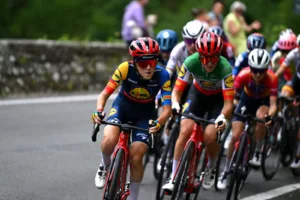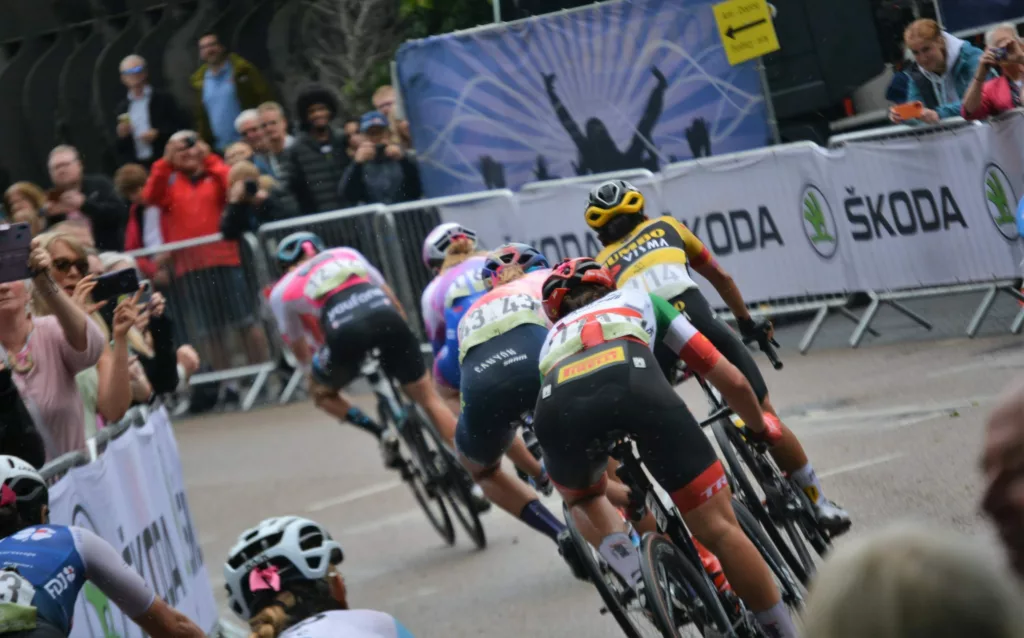The Puy de Dôme has always been more than just a climb in the Tour de France. Over the years, this volcanic peak in the Massif Central of France has been a battleground for some of the most legendary cyclists in history, the location of iconic moments, dramatic wins, and heartbreaking losses. From its first inclusion in 1952 until its last appearance in 1988, Puy de Dôme has been the silent observer of numerous tales that have shaped the mythos of the Tour de France.
Table of Contents
ToggleThe History of Puy de Dôme in the Tour de France
The inclusion of the Puy de Dôme in the Tour de France began with an unforgettable climb in 1952. The legendary Italian cyclist, Fausto Coppi, took the lead, breaking away 6 kilometres from the finish line to claim the first-ever victory atop the Puy de Dôme. His dominant performance cemented his legacy and marked the beginning of the climb’s legendary status.
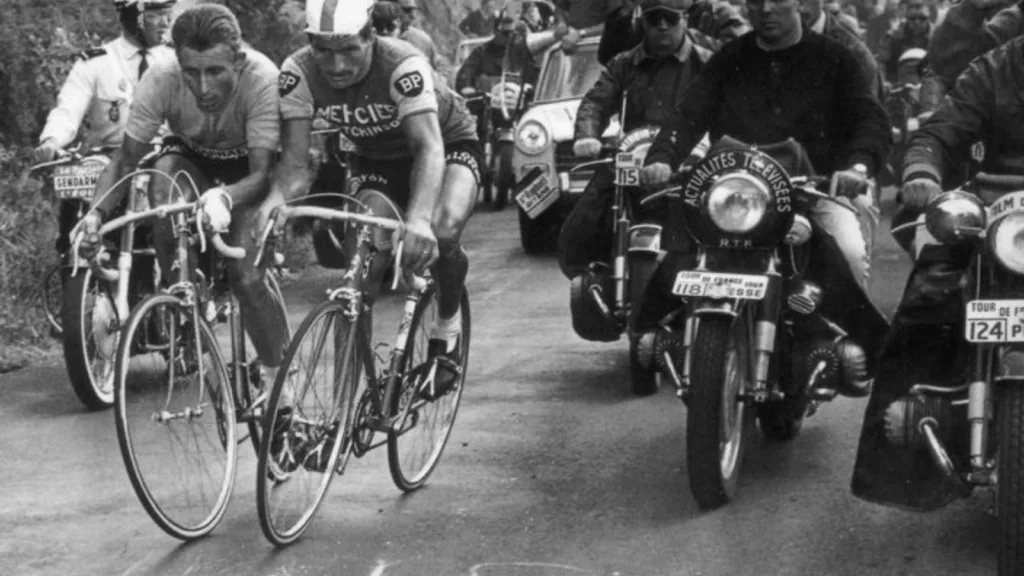
The Puy de Dôme’s steep and twisting slopes have been the scene of many epic battles. In 1964, the mountain was witness to the historic duel between two titans of French cycling: Jacques Anquetil and Raymond Poulidor. It was an arm-wrestling match on two wheels, with Poulidor attacking on the lower slopes and Anquetil clinging on desperately. Poulidor triumphed that day on the Puy de Dôme, but Anquetil ultimately won the war, taking his fifth Tour title.
1975: Merckx gets punched by a spectator
In 1975, Eddy Merckx, often hailed as the greatest cyclist of all time, was on his way to possibly securing his sixth Tour de France victory, which would have broken the record he then shared with Jacques Anquetil. As the reigning champion, all eyes were on him when the peloton reached the base of the Puy de Dôme.
The infamous incident occurred on the climb of the Puy de Dôme during stage 14. Merckx, wearing the leader’s yellow jersey, was making his way through the throng of spectators lining the narrow roads when an individual emerged from the crowd and punched him in the abdomen. The shock and the pain caused him to falter, slowing him down significantly.
What should have been another triumph for Merckx turned into a nightmare. He struggled to regain his rhythm after the assault, and the ensuing physical strain took its toll. Despite his best efforts, Merckx was unable to make up for the lost time and energy. The attack undeniably affected the remainder of his race.
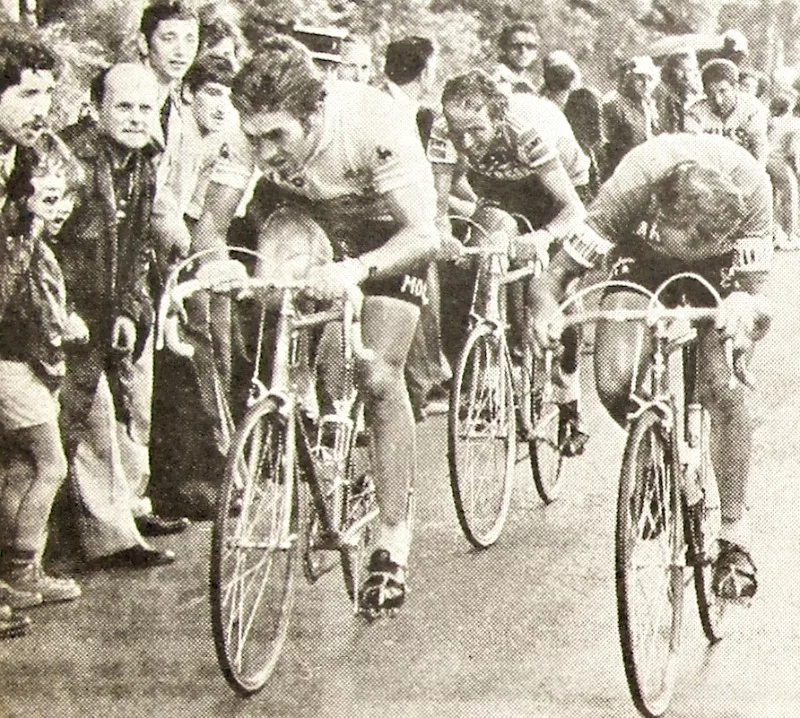
It was Frenchman Bernard Thévenet who capitalized on Merckx’s misfortune. Sensing an opportunity, he powered ahead to claim the stage victory and, eventually, his first Tour de France win. The shocking incident on the Puy de Dôme did not just mark a stage win or a Tour victory. It symbolized the end of Merckx’s reign over the Tour de France and the beginning of a new era.
Despite this dramatic setback, Merckx showed incredible resilience, finishing the Tour in second place overall. His performance post-incident spoke volumes of his character and his place among the pantheon of cycling greats. However, the 1975 Tour de France will forever be remembered for the shocking incident on the Puy de Dôme, a poignant example of the unpredictability and high drama of the world’s greatest cycling race.
1978: Hinault in trouble
The 1978 Tour de France was another notable chapter in the history of the Puy de Dôme. This year, the legendary climb served as the setting along the way for Bernard Hinault’s impressive overall victory.
Bernard Hinault, also known as “Le Blaireau” (The Badger), was in his prime during the late 1970s. Known for his fierce determination and aggressive style, Hinault had earned a reputation as a formidable contender. He would secure his first Tour de France victory in 1978 but was sitting in 2nd place as the riders reached the Puy de Dôme on Stage 14.
The Puy de Dôme was the final climb of a brutal 32km ITT stage that day. A stage that ended with an individual ascent of the Puy de Dôme with all of the eyes of the fans on the contenders.
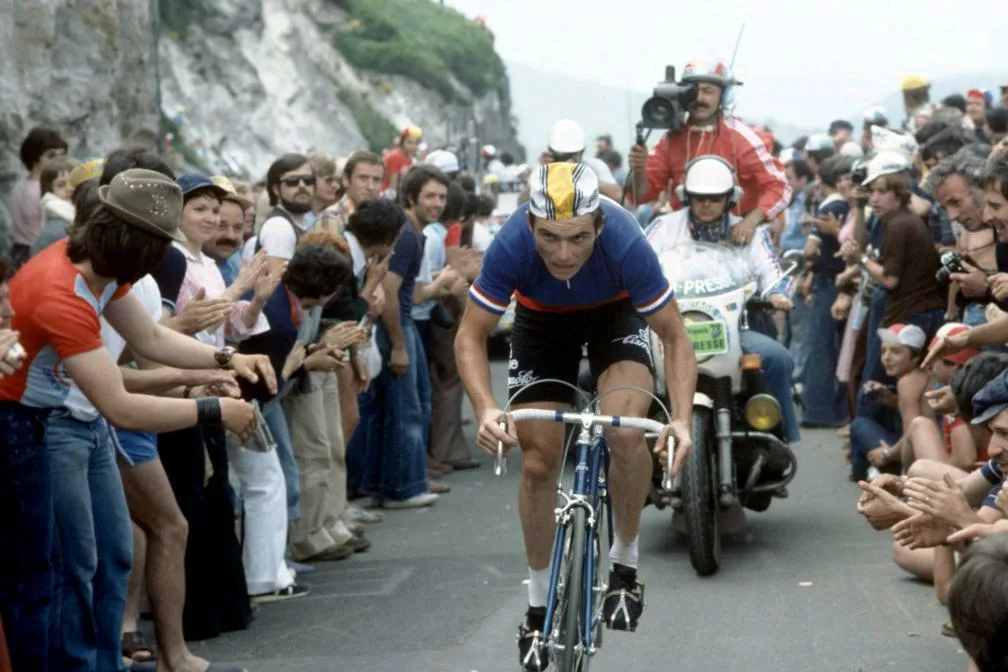
Despite going on to win that year’s Tour de France, Hinault was put in serious trouble that day by Joop Zoetemelk who would win the stage. 3rd in GC before the start of the stage, he was 53″ behind Inault in 2nd, who was 65″ behind the yellow jersey Joseph Bruyère. Hinault and Zoetemelk would effectively swap positions and time gaps as Hinault could only finish 4th on the Puy de Dôme a full 1’40” behind Zoetemelk and 45″ behind Bruyère.
Bernard Hinault’s dogged determination for the rest of that Tour de France to claw back time is what gifted it legendary status. A stage win the next day into Saint-Étienne was followed by a storming rider on Alpe d’Huez that saw Zoetemelk take over the yellow jersey but with a lead of only 14″ on Hinault. The TT on Stage 20 saw Hinault storm past Zoetemelk and effectively secure his first Tour de France win.
1986: The Badger and the L’Americain
The 1986 edition of the Tour de France remains one of the most dramatic and controversial in the history of the race, with the iconic Puy de Dôme climb playing a significant role. The narrative of this edition was centred around the intense rivalry and power struggle within the La Vie Claire team, between the defending champion, Bernard Hinault, and his teammate, the rising American star, Greg LeMond.
Throughout the 1986 Tour, Hinault and LeMond were engaged in a fierce internal duel. Despite Hinault’s public promise to support LeMond after the American had helped him secure his victory in the previous year’s Tour, Hinault appeared to have different plans as the race unfolded.
The tension within the team reached a climax during the mountainous Stage 21, which culminated with the climb of the Puy de Dôme. Greg Lemond finished 17th as the break other climbers not close in the GC finished ahead but importantly the American finished 52″ ahead of teammate Hinault and finally put paid to the Frenchman’s hopes of another Tour win. With no major tests to come, the now extended gap of 3’10” was too much to close.
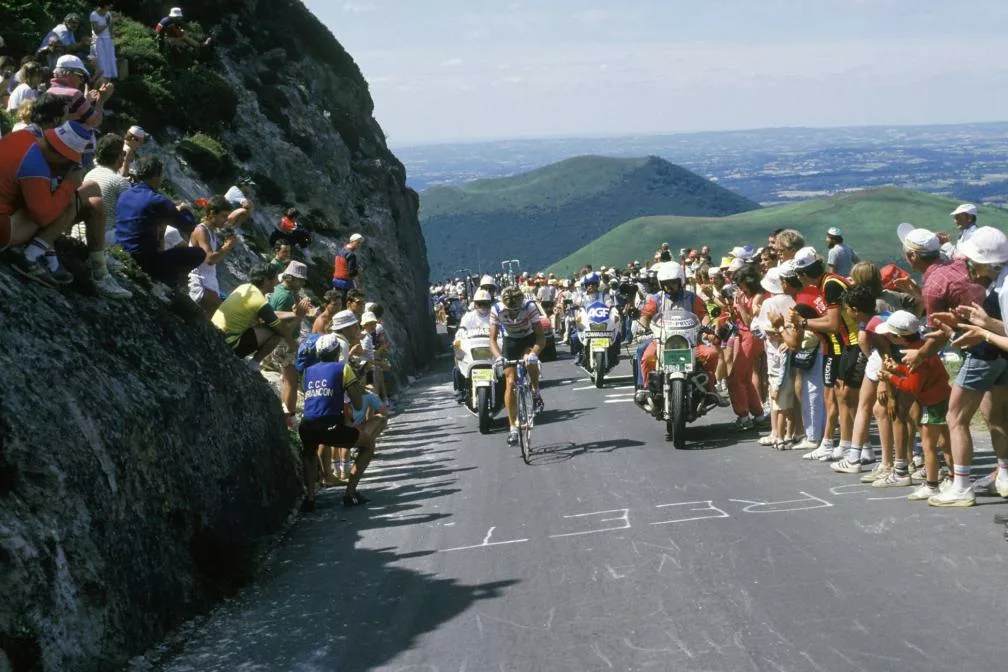
Erich Maechler of Carrera Jeans-Vagabond was the rider who actually won on the Puy de Dôme in the 1986 Tour de France, finishing 34″ ahead of Ludo Peeters.
The 1986 Tour de France concluded with Greg LeMond in the yellow jersey, the first American to ever win the Tour. His victory, however, was marred by the controversy and the intra-team rivalry with Hinault. The dramatic battle on the Puy de Dôme became a symbol of this tension and remains one of the most significant moments of LeMond’s career.
In retrospect, the 1986 edition of the Tour de France signalled a shift in power, with the torch being passed from the dominant Hinault to a new generation of riders represented by LeMond. The Puy de Dôme climb once again played a pivotal role in shaping the narrative of the race and the evolution of professional cycling.
The end of an era
After 1988, the Puy de Dôme disappeared from the Tour de France. The reason lies in logistical issues and the mounting concerns over the safety of the riders and spectators alike. The narrow, winding roads leading to the peak were simply not built to accommodate the modern, increasingly large Tour de France caravan.
In 2006, local authorities built a train line, the Panoramique des Dômes, to ferry tourists up the mountain, and later on would prohibit cycling on the ascent to protect the natural environment and ensure the safety of visitors. Thus, cycling up the Puy de Dôme is now a forbidden pleasure, reserved for the few events each year where it is allowed.
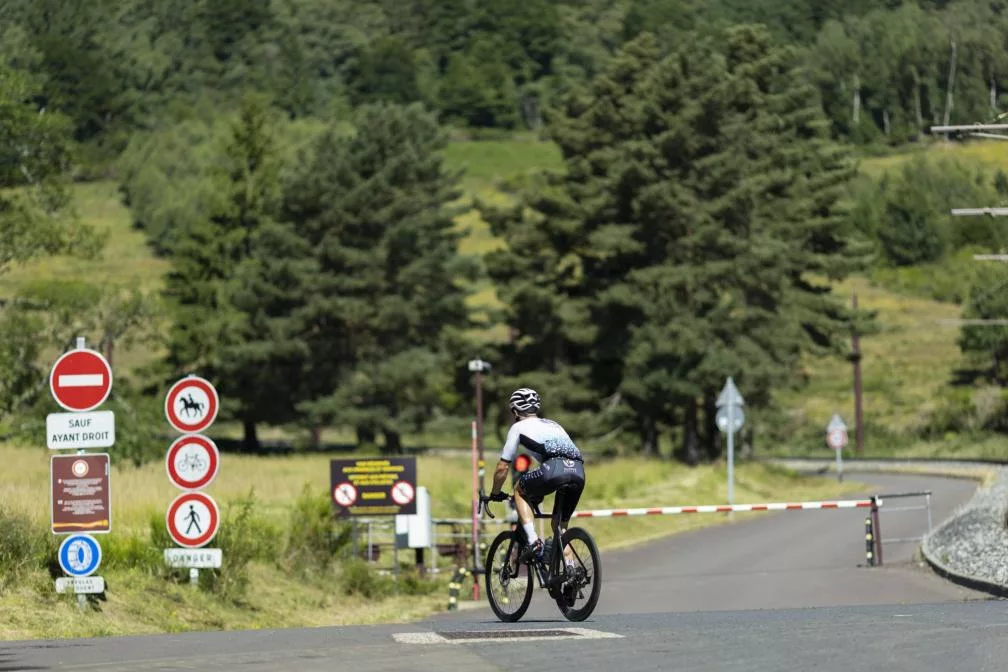
The legacy of Puy de Dôme
The 2023 Tour de France sees the race return to the Puy de Dôme, which retains its iconic status in the world of cycling. The mountain’s steep, serpentine roads and panoramic views at the summit capture the romantic essence of the sport, where man, machine, and nature meet in a dramatic contest of physical and mental endurance. It’s a symbol, a witness to the evolution of the Tour de France, and a shrine to the legends of the sport. Its slopes tell the stories of heroes and villains, triumphs and losses, battles and alliances, all woven into the rich tapestry of the Tour’s history.
Its absence from the Tour hasn’t stopped the Puy de Dôme from being alive in the heart of the Tour de France and cycling enthusiasts around the world. Despite its long 35 years of absence from the race, the Puy de Dôme remains an emblem of the Tour de France, symbolising the drama, the passion, and the enduring allure of the world’s most famous cycling race.



